Healthy spacing between pregnancies is important; here’s all you need to know about postpartum contraception

A woman’s body undergoes several changes — especially, before, during, and after pregnancy, something which also affects their sex life. As such, to give their bodies enough time to heal after delivery, many women fear an unplanned pregnancy during the postpartum period. In such cases, postpartum contraception — methods that help prevent closely-spaced pregnancies in the first year after giving birth — plays a huge role.







